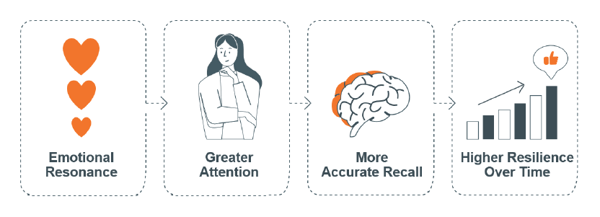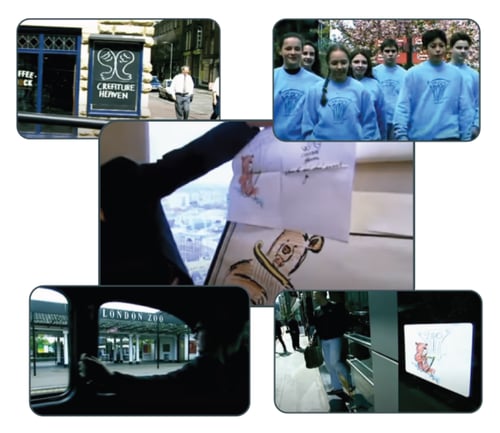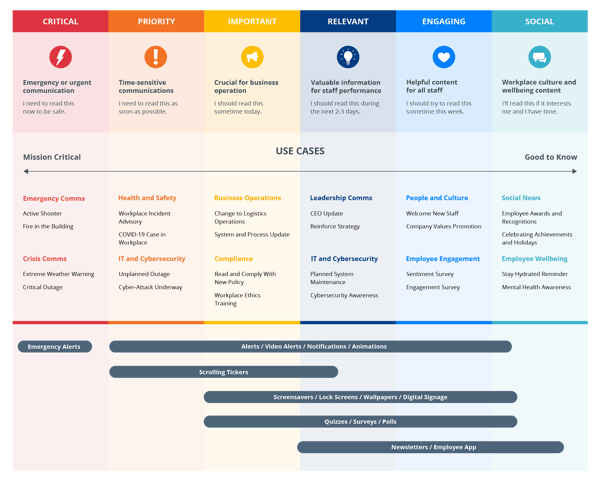
Think of the company messages you’ve sent to staff over the last few weeks. Chances are, some hit the mark, but others didn’t. Why is this?
What’s the reason some employee communications get through and others don’t? Why are some more successful? And if we know this, how can we change our way of messaging to ensure every message is equally successful?
It really is all in the mind.
Understanding the psychology of communication is the secret to how to improve internal communications. Join us for a look under the microscope.
We’ll share 6 insights that influence employee behavior, look at the implications for communications, and show you how to use these in your workplace. Download the free guide at the end – packed with more information, visual examples, and practical tips.
1. Environmental Influence
We’re heavily influenced by what we see around us – often without realizing it. It could be words or pictures or any combination of both.
In psychology, there’s a concept called priming. It refers to environmental cues ‘priming’ people to act a certain way. Priming encourages people to be more receptive to messages.
There’s a great example of English mentalist and illusionist Derren Brown showing environmental influence in action.
In the workplace, employees respond to internal communications based on how they’ve been influenced. Repeated exposure increases their willingness to listen and engage. They’re less surprised when events happen and more accepting of change.
Use teaser material before the launch of a new tool, process or campaign. This could be visual, like posters or digital displays, or written, like snippets in a newsletter.
For big workplace announcements, like a restructure or merger, use signposting campaigns in advance to increase employees’ familiarity with the situation.
2. Avoiding Cognitive Strain
People are wired to avoid things that are hard to understand. It’s called avoiding cognitive strain.
For example, this selection of iconography is instantly recognizable across the world. Each icon is visually simple but communicatively rich. They help us create ‘mental short-cuts’ which avoid us needing to think to interpret their meaning.
![]()
In psychology, it’s the idea of salience. This says that people pay particular attention to things that appear easy and accessible.
For communicators, delivering content in a consistent style and manner helps employees create this mental shortcut. Because they’re presented consistently, employees:
-
recognize the message faster,
-
are immediately familiar with it,
-
and are more likely to read and act upon it.
One example is Microsoft Teams. New message notifications are always the same color, structure and style. This consistency in appearance increases our familiarity and likelihood to engage.

3. Liking What’s Popular
As humans, we’ve survived because of our ability to band together. Being part of the group, or following the crowd, allows us to function in complicated and fast-changing environments.
Social psychology shows that likeminded people reinforce one another’s viewpoints. The beliefs we hold are strengthened when we’re around others who hold similar views.
Advertising campaigns constantly tell us their product is the “fastest-growing”, “most popular” or “best-selling”. They’re playing on the fact that popular is good – and that’s what helps sell products.

People inherently trust peers more than they trust officials. When creating a communications plan, identify the key influencers and thought leaders among your employees. Target messages specifically to them and involve them in your campaigns early – ideally in the planning stages.
By doing this, these employees can become valuable change agents who can help ‘convert’ other team members. This helps build trust and leverage the power of popularity to improve company culture.

4. Emotional Resonance
People remember things more strongly and more vividly if they have emotional resonance. For example, this sign has strong emotional resonance. It’s effective because it triggers an emotion – fear.
Experiences with emotional resonance are much more effective at engaging us. We pay more attention to them, we remember them more vividly and accurately, and we recall them more easily over time.

One of the best ways of tapping into emotional resonance for employee communications is storytelling. Stories are up to 22 times more memorable than facts alone.
By using storytelling in our communications, we make scenarios more real and tangible. We consider how employees feel. This encourages them to buy into the message and come along for the ride.
When planning campaigns and constructing messages, consider the emotional element of the visuals you show and the words you use. Think about what the message means at a personal level, not a business one. That’s how to keep employees engaged.
5. Positive vs Negative Appeal
Everyone loves a nice, positive story, right? The truth is, we’re attracted to both positive messages and negative messages – but for very different reasons.
Positive messaging is used to appeal to our psychological desire for pleasure. The same way as was demonstrated with dogs in the famous Pavlov’s dogs experiment.

But negative messaging or bad news also has an innate appeal to us. In a study at McGill University in Canada, participants more often chose to read news stories with a negative tone than neutral or positive stories. It’s evidence of what psychologists call a “negativity bias”.
We can use this knowledge to improve the adoption of positive behavioral change. Show employees both the negative consequences of non-compliance (such as loss of status), and the positive consequences of compliance (like social approval and satisfaction). They'll then begin to automatically associate pain with non-compliance and pleasure with compliance.
6. Attention Management
We’re living in a world with more distractions than ever. There’s a lot more competition for our attention – at home and at work. Each week, every employee spends 8 hours in unproductive work caused by information overload.
Attention management is how employees only give their attention to messages they know are relevant and useful to them. Everything else is ignored.
This is a problem for communicators. If staff are being selective in which messages they read, there’s no guarantee that important communications are being read.
We can overcome attention management by improving the relevance of content and the communication channels we use. The Communications Spectrum framework shows how to achieve this. It aligns business objectives, channel selection, tactical execution and employee responses.
Communicators can overcome attention management by using the Communications Spectrum framework to deliver the right message, through the right channel, at the right time.

But this is just the tip of the iceberg. For the full story, get your copy of our free guide:
All In The Mind: How Understanding Psychology Improves Your Internal Communications



